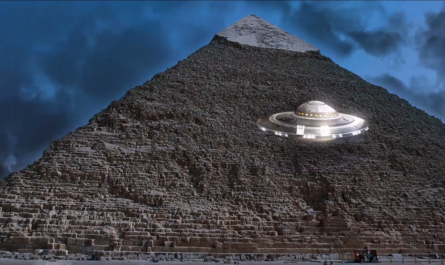7100 BCE The First Aaryan King: The Epic Origin of India’s First Dynasties!
The legend of Vaivasvata Manu, regarded as the progenitor of humankind and the first Aryan king, is deeply rooted in ancient Indian mythology. This myth connects the origins of two of India’s most significant royal lineages: the Suryavanshi (Solar Dynasty) and Chandravanshi (Lunar Dynasty). Below is a detailed account of this story as depicted in Hindu texts and traditions:
1. Vaivasvata Manu and His Kingdom
According to Hindu scriptures such as the Bhagavata Purana, Vishnu Purana, and Mahabharata, Vaivasvata Manu, also known as Satyavrata or Shraddhadeva, was the seventh Manu. A Manu is a title given to the progenitors of humanity during each cosmic age (Manvantara). Vaivasvata Manu is acknowledged as the first human and king of the Aryan lineage.
His kingdom is traditionally believed to have been in the northern part of India, around Prayagraj (or Jhusi), modern-day Allahabad. Manu was tasked with re-establishing civilization after a great flood.
2. The Great Flood and Manu’s Survival
One of the most famous legends surrounding Vaivasvata Manu involves a massive deluge, akin to flood myths in other cultures. According to this legend, Manu was warned by the god Vishnu, who incarnated as a fish (Matsya avatar), about an impending flood that would destroy all life on Earth. The fish stated Manu to build a large boat and fill it with seeds, animals, and sages in order to save life. When the flood came, Manu and the survivors sailed on this ark until the waters receded, making him the sole human survivor of the disaster. After the flood, Manu re-established a new world order, creating a stable society and ensuring the survival of human civilization.
3. The Birth of the Suryavanshi and Chandravanshi Dynasties
Vaivasvata Manu had ten children—nine sons and one daughter, Ila (or Ilaa). His nine sons—Ikshvaku, Drishnu, Sharyati, Narishyanta, Prishadhra, Karusha, Nabhaga, Dhrishta, and Kavi—each established different royal lineages. Among them, Ikshvaku became the founder of the Suryavansh or Solar Dynasty, known for its association with the Sun god, Surya. This dynasty was home to many powerful kings, including the legendary Lord Rama in later generations.
4. Ila’s Role in the Formation of the Lunar Dynasty (the Chandravanshi lineage)
Ila’s tale is both distinctive and noteworthy. According to various legends, Ila was born as a female but was later transformed into a male under mystical circumstances. One popular account states that Ila wandered into a sacred grove of the god Shiva and, as a result of a divine curse, was transformed into a man named Sudyumna. However, this transformation was not permanent, and Ila alternated between male and female forms.
After being transformed into a woman, Ila developed a deep affection for Budha, the celestial being associated with the planet Mercury, who was also the son of Chandra, the Moon god. Their union resulted in the birth of a son named Pururava, who became the founder of the Chandravansh or Lunar Dynasty. Through Pururava, the Chandravanshi lineage grew, eventually producing influential rulers such as King Yayati and the Kuru-Pandava dynasty of the Mahabharata. This lineage is often associated with wisdom, mysticism, and a strong connection to the Moon.
5. The Suryavanshi and Chandravanshi Dynasties in Indian Tradition
Both the Suryavanshi and Chandravanshi dynasties played crucial roles in the mythology and history of ancient India. The Suryavanshi lineage, with its warrior kings, was known for its adherence to dharma (righteousness) and valor, while the Chandravanshi lineage was associated with wisdom, arts, and the pursuit of knowledge.
These dynasties symbolized the cosmic balance between the Sun and the Moon, day and night—forces that were both seen as necessary for a harmonious existence. This balance is reflected in numerous Indian texts, where the two lineages are regarded as complementary forces in the Hindu worldview.
6. Key Figures and Their Impact
- Ikshvaku: The founder of the Suryavanshi dynasty, which produced a long line of kings, including Harishchandra, Bhagiratha, and the legendary Lord Rama—an incarnation of Vishnu and the protagonist of the Ramayana.
- Pururava: The founder of the Chandravanshi dynasty, born of the union between Ila and Budha. Pururava’s story is famous for his passionate love for the celestial apsara Urvashi. His descendants later established powerful kingdoms like the Kurus and Yadavas.
- Lord Rama: One of the most celebrated figures in the Suryavanshi dynasty, Rama is the protagonist of the Ramayana and is revered as an embodiment of dharma and moral righteousness.
- The Pandavas and Kauravas: Descendants of the Chandravanshi lineage through King Kuru, they are central figures in the Mahabharata.
7. Symbolic Meaning of the Dynasties
The establishment of the Suryavanshi and Chandravanshi dynasties represents the cosmic balance and the spread of civilization in ancient Indian lore. The two dynasties symbolize dual principles—valor and wisdom, stability and adaptability, light and reflection—through which kings ruled and inspired their subjects. These dynastic legends are deeply embedded in India’s cultural memory, emphasizing the interdependence of all aspects of life and governance.
This intricate mythological history serves as the foundation for much of the royal lineage lore in India and underpins the rich epic tradition that has shaped Indian literature and spirituality over millennia.




